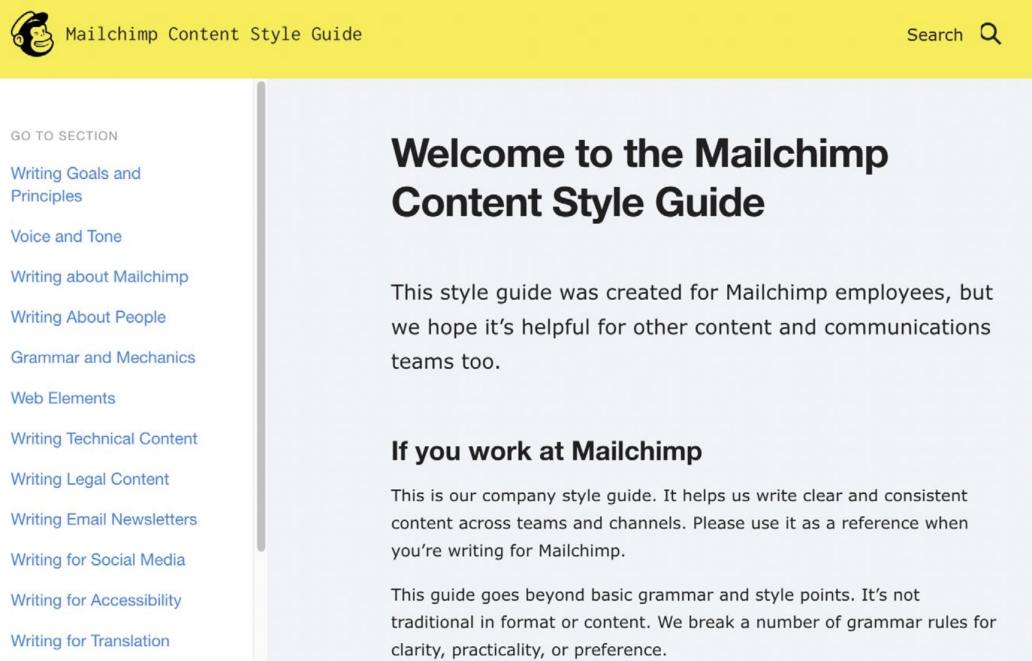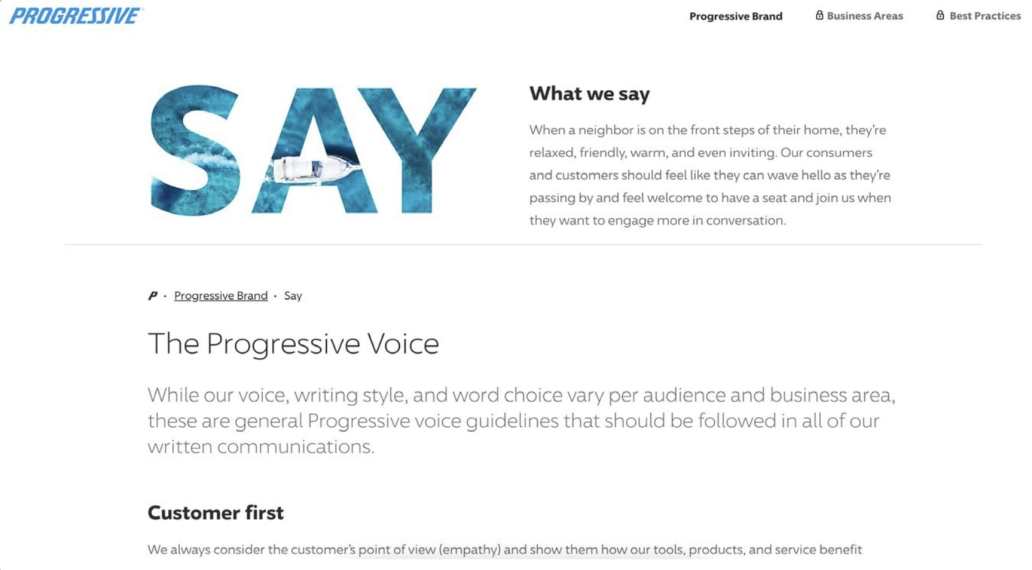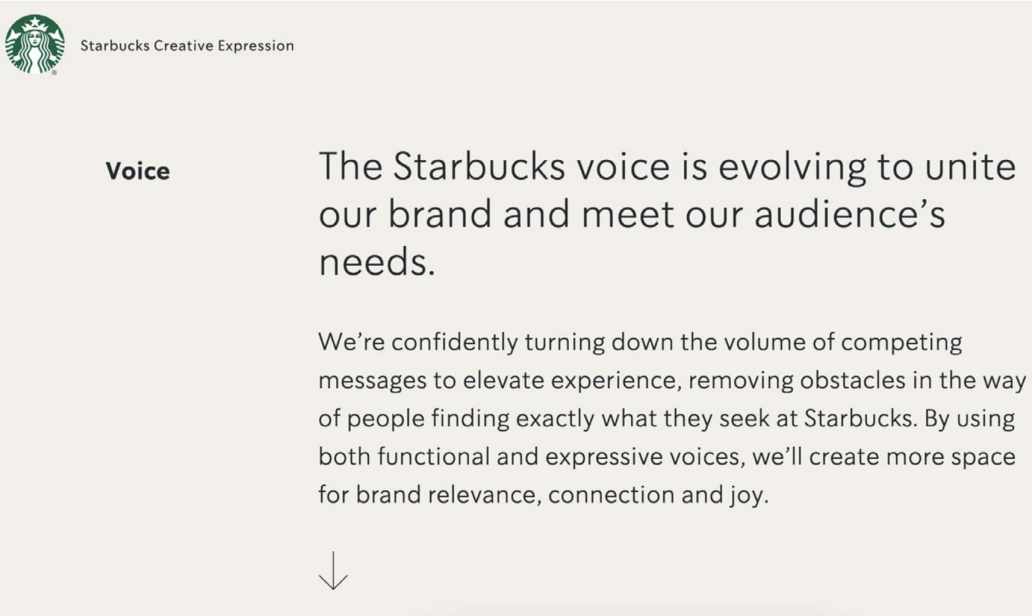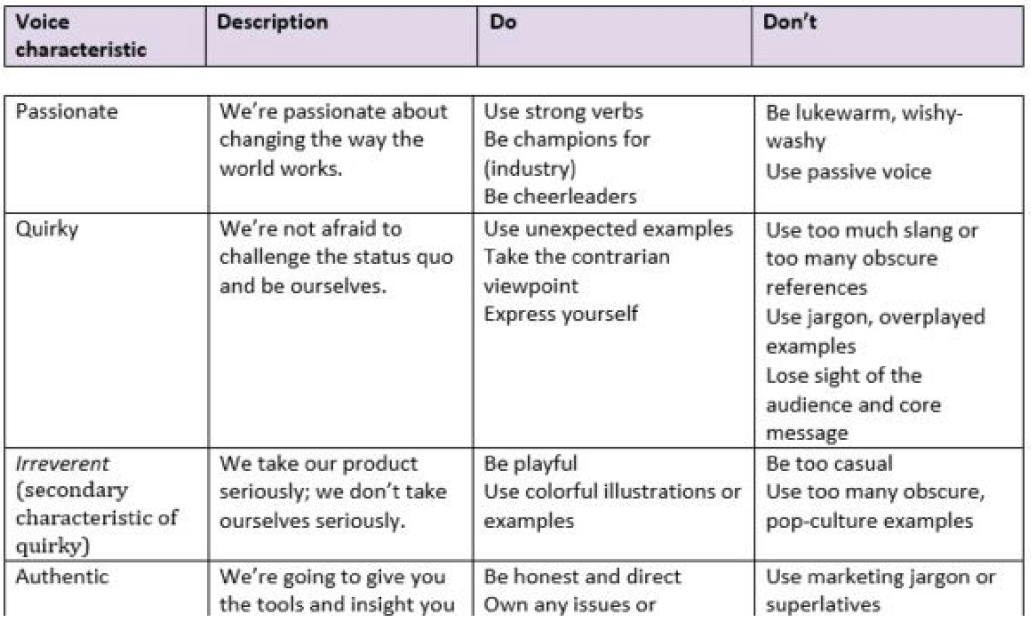How to Find Your Brand Voice

Marketers and musicians have a lot in common. They each compete for attention in a crowded marketplace. They each want an emotional connection with their fans, and they each want people to remember their distinct sound long after their song or campaign is over.
For marketers, that distinct sound is your brand voice. Companies that spend the time researching, testing, and honing a brand voice position their brand to earn an industry reputation for authenticity and consistency, make it easier for teams to produce content quickly and cleanly, and command higher prices for their products and services.
Table of contents
Why brand voice is important
A strong brand voice makes your company stand out in a customer’s mind. There’s no mistaking Adele’s rich, powerful signature sound when it fills a room. Your brand voice should have the same effect.
The World Advertising Research Center (WARC) compares the value of Oatly to its competitors. Two products that otherwise taste and look similar can have vastly different values thanks to brand voice.
“The difference in the two brands? It’s 99% attitude,” explains WARC.
Your content should have a consistent, unique tone that resonates with your target audience. A voice that resonates with the risk-averse, mid-career professional audience of a life insurance company won’t hit the same for the outdoor athlete audience of a helmet-mounted video camera company.
If those two brands wrote the same content but swapped voices for a day, their audiences would be turned off by the discordance. It would seem like the company doesn’t understand their needs, and they’d look for a different company that “gets” them.
Companies who stray from the style and content customers have come to expect come off as inauthentic. Sometimes that misstep leads to backlash and a loss in brand value, as Pepsi discovered in 2017 with its infamous Kendall Jenner ad, which awkwardly tried to channel Black Lives Matter and other protest movements. Pepsi failed to listen closely to its audience and came across as completely tone deaf.
Even if the negative feedback for your company isn’t as dramatic, singing out of tune with your customers’ expectations will hurt your brand.
What is brand voice
Brand voice is not just about what you say, but how you say it. It’s how you show your brand personality that helps you make emotional connections with your audience.
But someone with a humorous personality may be more reserved during a job interview, or a typically serious person might loosen up and crack a joke at a late-night party. How your brand voice sounds in different contexts is called brand tone.
Brand voice vs. brand tone of voice
Like the quality of a singer’s voice, your brand voice should always be recognizable, but that doesn’t mean your voice is monotone. Brand tone of voice is how your company explores their entire vocal range. Different tones are appropriate for different channels. Your brand strategy may call for email campaigns to speak to customers like close friends, while the chatbot that helps them navigate customer service questions takes a more formal tone. Even different social media channels within your marketing strategy may have different tones. For example, humor may be appropriate for your brand voice on Twitter but not on LinkedIn.
The Transportation Security Administration (TSA) is a perfect example of this difference in tone in action. The TSA’s content marketing team understands their audience is interacting with their brand in different contexts, whether they are visiting through Facebook, Twitter, or the website.
The TSA Twitter handle often posts surprising, quirky things their agents uncover during their duties. On Facebook, that humor is toned back, and instead, the agency answers frequently asked questions, offers travel tips, and teaches their audiences about their policy with informative videos. Meanwhile, visitors to the TSA website are met with a much more formal tone.
TSA’s consistent brand voice adopts different tones to meet the needs of each digital marketing channel.
How to define your brand voice’s signature sound
If you’re an established company, you already have a brand voice because your customers have already developed an impression of you. But if you didn’t develop that voice with intention, the sound you think you’re projecting to customers and what they actually hear might match about as closely as your singing voice does in the shower versus behind the mic on karaoke night.
To develop a brand identity with intention, start by defining your audience.
“When it comes to creating a brand voice, the first step is to define your audience,” says Max Benz, founder and CEO of BankingGeek. “Who are you speaking to? What are their needs and wants? Once you have a good understanding of your target audience, you can begin to craft a message that resonates with them.
As you learn about your target audience, go beyond the demographics of age, gender, and geography. Your brand’s unique personality needs to speak to the core values of your audience to work well. For example, Patagonia understands the people who buy their outdoor gear care about sustainability and environmental issues, and they craft their messaging to speak to those values.
So, how do you learn more about your audience’s needs and what they value? One way is to track how they engage with your website and your content. Use a tool like Parse.ly, part of the WordPress VIP content management platform, to see what content visitors are engaging with the most, which topics or questions they care about, and which tones of voice are resonating.
Take a look at what kinds of social posts drive engagement and which tones of voice work best on different channels. Use these types of insights to curate an effective brand voice in future conversations with your audience.
Brands can also use social media listening, website surveys, post-purchase emails, or customer service correspondence to help curate their voice based on the language their audience uses to communicate. Get involved in discussion forums where your audience has developed a community, and follow the same media sources they subscribe to.
It wouldn’t be surprising if Patagonia staffers contribute to Reddit channels about backpacking or devour the latest Outside magazine articles. Clues about who your audience is and how they communicate can be found in both external and internal sources.
“I work closely with our sales, product development, support, and management teams,” says Meryl D’Sa-Wilson, content marketing manager at United World Telecom. “It is important to us that our messaging aligns with customer expectations and needs. To understand what our customers care about and how to reflect that in our brand voice, I listen to customer calls, have conversations with our salespeople, and interview customers for case studies. This helps me understand how to develop our brand tone across different types of content such as web, email, landing pages, and support articles.”
D’Sa-Wilson distills all that qualitative data into detailed buyer personas to help her clarify exactly who they are connecting with, what their priorities are, and how they prefer to communicate with United World Telecom’s brand.
When your brand values are in harmony with both your mission statement and your customers’ principles, it’s easier for your brand to speak authentically to your audience and earn customer loyalty.
Want to learn more about what matters to your audience? Check out Chapter 2 of our How to Do Better Content Marketing series for a comprehensive guide on understanding your target audience.
Great brand voice examples
Let’s look at some companies who have their brand voice down pat. Don’t impersonate, but learn what makes their voice work for their customers, and use those lessons for your own brand.
Apple matches their sleek, distinctive product design with a messaging style that uses direct, declarative sentences. The tech company’s voice is confident, aspirational, and assertive.
Burger King addresses topical issues with a snarky, brash, and irreverent tone that may turn some people off but engenders even more loyalty from their fans.
Harley-Davidson’s copy embodies rebellion in text form. The quintessential motorcycle manufacturer emboldens fans with aggressive, boastful language that matches the feeling of rugged individualism riders seek when they straddle a Harley.
How to use a consistent brand voice to always hit the right notes
According to a Lucidpress survey of 450+ companies, 77 percent of respondents regularly see off-brand content in their communications.
Content creators are inundated with demands on their time, so they need a solid system in place to efficiently develop, review, and publish the content their audience demands while making sure it’s written in the appropriate brand voice every time.
Brand voice guidelines
Documenting your brand voice guidelines provides content creators on your team with one source of truth, which makes it easy to maintain a consistent brand voice.
These guidelines should include both a style guide and a brand voice chart that cover different scenarios based on who your audience is, the channels you use to communicate, and the brand voice you nurture.
Style guide
A style guide is a how-to manual on writing for your brand. It addresses details large and small, like when to use an exclamation point or which nouns to use when you refer to your audience.
The best way to get a feel for how to organize a style guide and decide what to include in yours is to look at the guides published by other successful brands.

Mailchimp’s style guide covers their ideal tone for different channels, from technical content to social media platforms. But it doesn’t stop there. Their style guide dives into how to write for people with different physical or mental needs and people who speak different languages.
The document’s language is clear, concise, and filled with examples that make it easy to train new content creators.

Progressive developed an easy-to-follow guide that anyone at the company can skim and follow when they write. The guide effectively talks about the overarching principles of writing for the brand by highlighting the simple, human language they expect content creators to use.

Starbucks’ style guide shows how their message fits with their overall brand image to form a cohesive brand personality. Starbucks carefully describes how to express their functional, expressive personality with descriptive brand voice charts and examples of on-brand messaging.
Brand voice chart

A brand voice chart is a handy tool for everyone on your team to reference quickly when they write for your brand. It helps everyone sing from the same sheet of music.
The template for building an effective brand voice chart is pretty simple, but it takes a lot of thought and internal conversation to flesh out the chart with the right language and effective examples specific to your company and industry.
The chart should include three to five adjectives that describe your brand personality. Perhaps your company is confident, plainspoken, friendly, and empathetic.
With those adjectives in hand, take a sentence or two to describe what those adjectives mean to your company. There are many ways to sing the same tune. One brand may say confident means they speak to their audience as industry guides. Another may decide displaying confidence means speaking with a swagger bordering on boastfulness.
To delineate different gradients of the same word, the third and fourth columns in your chart should have examples of how this adjective looks in action and examples that don’t match your definition. These “say this, not that” examples help you hone your brand voice and maintain it across different writers on different channels.
Incorporate brand voice guidelines into your editing process and reinforce them with training
Your brand voice guidelines should be close at hand throughout the writing and editing process.
“We run every piece of content through several rounds of editing,” says Chris Zacher, content marketing strategist at Intergrowth. “A content editor reviews it first, then passes it on to at least one content manager before it goes live. We all look for incongruities to ensure that the brand voice aligns with our guidelines. You don’t need a big team with multiple editors to do this, though. Even if you work by yourself, you can put every piece of content aside for a few days and revisit it with fresh eyes to make sure the voice sounds right.”
According to Lucidpress, 31 percent of companies say their brand guidelines are not consistently followed. Avoid applying brand voice inconsistently by using clear language and relevant examples, training staff on your guidelines regularly, referring back to documentation often—and making that documentation easy for everyone to access.
Every member of your content marketing team should be trained on your company’s brand voice guidelines. Set aside time at regular intervals to refresh their familiarity with applying those guidelines in different scenarios, from social media posts to customer service resolutions.
“Every member of our content marketing team is introduced to our brand voice during their training,” Zacher says. “If we have someone from our web development department working directly on content, we’ll usually discuss our brand voice in any conversations leading up to that project.”
Standardize brand voice with templates
The best way to maintain an effective brand voice across content projects that involve multiple teams is to use content templates.
Gosia Hytry, head of content at Spacelift, believes templates are a critical tool for executing a consistent brand voice.
“For other departments, like HR, sales, and customer service, the content team creates templates for them,” Hytry says. “The manager has to look if the team is working with the templates built following the guidelines. We provide templates for customer support responses, live chat, and frequent queries.”
This is a common brand consistency tactic used by 82 percent of organizations, according to Lucidpress. Unfortunately, only 16 percent of organizations told Lucidpress all company teams use those templates.
Inconsistent use of templates leads to off-brand messaging. If a creative team can’t get to a piece of content soon enough, teams in other departments are likely to create the content on their own. Keep those templates updated and circulate them often so everyone can easily work from the latest brand guidelines.
“We create and update content guidelines and email templates as our messaging evolves,” D’Sa-Wilson says. “We then share them across departments to get input and feedback.”
How to use brand voice to help your business growth reach a higher octave
A streamlined writing process means more gets done. And more getting done means everything from engaging more readers to generating more revenue for your business.
Unfortunately, creative teams waste five to 10 hours per week on mundane editing requests, according to Lucidpress, distracting them from the real business at hand. That’s why it’s a must to have defined, easily accessible brand voice guidelines (and to train content creators on them).
A consistently executed brand voice can inspire revenue growth because it streamlines the content creation process, helping your content creators get the voice right the first time without a lot of back and forth, guesswork, and iteration.
A consistent brand voice also increases brand recognition. Customers who recognize your brand and remember their last interaction with it fondly are more likely to remain customers. And, the more customers associate your brand with quality experiences, the more they are willing to spend with your company.
This is why 68 percent of companies told Lucidpress that brand consistency drives between 10 and 20 percent more revenue.
As you continue honing your brand voice, keep paying attention to the results. Use a content analytics tool like Parse.ly to learn how your audience is responding to your brand voice based on the content they engage with most and the content that convinces them to take actions like signing up for webinars and newsletters or buying your products. As you glean performance insights from each piece of content, topic, and channel, you’ll be able to create more effective content faster.
Your brand voice isn’t a solo act—it’s a chorus
Everyone on your team needs to recognize the tune of your brand voice and be able to sing along in every customer interaction. Learn the right song by listening to your audience. Then teach your company the lyrics by documenting your brand voice guidelines.
A consistent brand voice projects authenticity. And 88 percent of consumers care about authenticity, according to a Stack survey of 2,000+ people.
But building and maintaining a brand voice is work that’s never done. Once you have your team in harmony, it’s time to measure the crowd’s reaction to your greatest hits and adjust to what you learn.
To do that, it helps to have a simple, intuitive content analytics tool. When you write a crowd-pleaser, everyone on your team needs to understand what made it go platinum.
Parse.ly, part of the WordPress VIP content management platform, is the tool that turns content creators into data analysts. Learn more about how Parse.ly can help your team tune your brand voice (and content) to the right notes.


